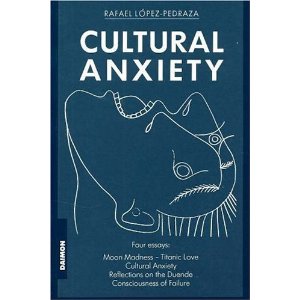In the wake of the shootings in Tucson, New York Times journalist David Brooks has an Op-Ed today entitled “Tree of Failure.”In this thoughtful piece of writing, Brooks discusses civility in a manner which some people no doubt will have trouble accepting – much less applying – even in light of the pain and soul-searching that has followed this tragedy. Here are a few excerpted lines:
“Civility is a tree with deep roots, and without the roots, it can’t last. So what are those roots? They are failure, sin, weakness and ignorance.”
“Every sensible person involved in politics and public life knows that their work is laced with failure. Every column, every speech, every piece of legislation and every executive decision has its own humiliating shortcomings. There are always arguments you should have made better, implications you should have anticipated, other points of view you should have taken on board.”
“So this is where civility comes from — from a sense of personal modesty and from the ensuing gratitude for the political process. Civility is the natural state for people who know how limited their own individual powers are and know, too, that they need the conversation. They are useless without the conversation.”
“The problem is that over the past 40 years or so we have gone from a culture that reminds people of their own limitations to a culture that encourages people to think highly of themselves.”
“Beneath all the other things that have contributed to polarization and the loss of civility, the most important is this: The roots of modesty have been carved away.”
Brooks also says quite rightly that “Speeches about civility will be taken to heart most by those people whose good character renders them unnecessary. Meanwhile, those who are inclined to intellectual thuggery and partisan one-sidedness will temporarily resolve to do better but then slip back to old habits the next time their pride feels threatened.” We would all do well to heed his words.[1]
In attempting to go deeper into the root of civility identified by Brooks as “failure,” it may be helpful to consult a copy of Jungian analyst Rafael Lopez-Pedraza’s essay “Consciousness of Failure” from his book Cultural Anxiety. He begins the essay by noting that our present-day world, especially in the West, is so success-oriented that “failure as a subject for discussion is excluded from the anxieties of our time. Failure and its attendant circumstances are severely repressed; it is as if it were the last thing we want to hear about.”[2] He states how this success-heavy orientation naturally finds its way even into the psychotherapeutic office, not only in the form of the patient with his or her unrealistic expectations of a “quick cure” but also in the form of the therapist who similarly and all too frequently views failure(s) as an obstacle to be overcome rather than worked through. This latter process of “working through” can – and should – be a very painstaking process indeed if true healing is to occur.[3]
This blog post cannot do justice to Lopez-Pedraza’s insights on failure and how they are applicable in the aftermath of last weekend’s shootings. Nevertheless, it is amazing to me just how prescient or on-the-money his insights – published in 1990 – have proven to be. For example, in discussing the reflection we must undergo if consciousness of failure is to be realized, Lopez-Pedraza writes:
“There are three strong elements in human nature: the Puer Aeternus, hysteria and the psychopathic component, with acceleration as the dominant feature of their expression, a feature which is closely bound up with irreflection.”[4]
Puer Aeternus is Latin for eternal youth or adolescent and is embodied in our already mentioned belief in “the sky’s the limit” success, which, put differently, of course translates into “failure is not an option.” Other puer slogans are “I don’t have time for reflection, talking cures (i.e. therapy), feelings, conversation/debate, working together, working through.” Time, after all, is money, and money, alas, is the barometer bar none of…success.
There was concern in some camps after President Obama’s speech in Tucson that it was too peppy and uplifting. Not somber enough. Not, that is, enough of a memorial. As has been stated elsewhere, it is difficult as an outsider to criticize what insiders have said in essence was just what Tucsonians needed at that moment: comforting and a chance to cheer.[5] Nevertheless, those people with some lingering reservations about a pep-rally atmosphere may be intuiting another danger to which the eternal youth, or puer aeternus, in each of us is susceptible:
“When there is a collapse that we could see as a failure from which we could learn and reflect, we rapidly rebound from it by clutching at another vain fantasy, advancing irrevocably to meet another failure. For what might save us from new failures is consciousness of the previous failure; failure providing reflection. But no, the demand for success is so enslaving that it does not leave us the time or the tempo that makes reflection possible.”[6]
Certainly, multiple examples can be drawn from President Obama’s speech where he appeals to our “moral imaginations,” asks us to “sharpen our instincts for empathy,” encourages the “challenging of old assumptions,” and in other ways calls for an active rather than a passive approach to our current suffering. All of these exhortations mean to utilize reflection to forestall any such rapid “rebound” as that discussed in the above quote.*
Lopez-Pedraza describes several characteristics of hysteria which are pertinent to the topic at hand, only one of which we will now briefly discuss:
“But another important feature of hysteria is that it is able to adopt any instrument and use it as a vehicle for manifesting itself. Apparently one of the most readily available instruments, which fits hysteria like a glove, is guilt-making. Consequently, we sometimes have the spectacle of hysteria using guilt-making, with subtlety and insinuation, and sometimes we are embarrassed by its barefaced effrontery.”[7]
In his speech, President Obama undeniably called for us to rise above the guilt-making that was so evident in the media after the shootings. (Even Sarah Palin’s video response to the guilt-making leveled at her continued the trend, most noticeably in her use of the guilt-ridden term “blood libel” to hit back at the media). Obama, finally, not only called for us to rise above this guilt-making but in the process gave us an example of someone doing so.
As mentioned above, a third element of human nature needs to be considered if we are to become conscious of failure and, furthermore, not be doomed to repeat it: psychopathy. Lopez-Pedraza admits up front that he uses the term somewhat loosely rather than in accordance with its strict psychological definition. Psychopathy in the present context describes a person who is empty or void of soulful consideration of and compassion for others, unaware of possessing any limits, and not rooted, then, to the Earth-bound reality of social obligations, rules and regulations. One article from the New York Times that provides stark examples of alleged shooter Jared Loughner’s “psychopathy” mentions his love of nihilism, his inability to strike a balance and distinguish between the reality of his dreaming unconscious (or “subconscious”) and waking life, his preference for chaos over order, and his use of the word “hollow to describe how fake the real world was to him.”[8]
Lopez-Pedraza gives Albert Camus’s The Outsider and Anthony Burgess’s The Clockwork Orange as examples of individual and collective psychopathy in literature. In an earlier essay in Cultural Anxiety entitled “Moon Madness – Titanic Love” he mentions Camus, Burgess, and also the Greek myth of Endymion, a youthful shepherd who goes through life in a dreamy catatonic daze. In fact, as Lopez-Pedraza shows, catatonia was a term coined by German psychiatrist Karl Kahlbaum to describe “that condition in which the patient sits quietly or completely mute and motionless, immovable, with a staring countenance, the eyes fixed on a distant point and apparently completely without volition, without any reaction to sensory impressions…”[9] This image is quite reminiscent of one of Loughner provided in a police report from an earlier visit to Loughner’s home. The officer wrote: “While inside the garage I spoke with Jared who held a constant trance of staring as I narrated the past events that had transpired.” According to the article this “trance” lasted “almost an hour” after which “Jared Loughner broke his silence” with the words “I realize now that this is all a scam.”[10]
Clearly, as with the eternal youth and hysteria discussed above, we must look at our own “psychopathic” tendencies if we are ever to gain consciousness of our failures. In what ways do we unfeelingly and unthinkingly walk through life? In what ways do we prefer to “zone out” or stick our head in the sand? After such a tragedy as occurred in Tucson we cannot afford to unreflectively “go through the motions” no matter how ill-equipped to contribute to the needed changes we might feel.
To conclude, Lopez-Pedraza implies that the type of reflection that is needed if consciousness of failure is to be realized is also a reflection “of” and “from” death.[11] What are the dead trying to reflect back to us? What is the psychopath reflecting in his empty stare? What failures of “moral imagination” can be seen there? With his words, President Obama, of course, asks us also to reflect on what kind of life we want to – and, moreover, realistically can – live as individuals living together in a collective society. Finally, like David Brooks, Obama asks us to pose these questions to ourselves and to others as civilly as we can.
But for now it is certainly appropriate and necessary to continue mourning those lost, and Mythfire personally mourns, remembers, and strives to honor another person lost last week:
Rafael Lopez-Pedraza, esteemed Jungian analyst and author of Cultural Anxiety, Hermes and His Children and Dionysus in Exile, passed away in Venezuela on Monday January 10, at the age of 90.
———
On Thursday: “The Myth of Blood Libel”
———
*For more on President Obama and empathy see especially the “Myth and Justice” VI and VI.2 blog posts. The entire “Myth and Justice” series in no small part was an attempt to “sharpen our instincts for empathy.”
[1]http://www.nytimes.com/2011/01/14/opinion/14brooks.html?_r=1&hp. An earlier Times Op-Ed by Brooks after the Tucson shooting can be found here: http://www.nytimes.com/2011/01/11/opinion/11brooks.html?ref=davidbrooks
[2] Lopez-Pedraza, Rafael. Cultural Anxiety. Einsiedeln, Switzerland: Daimon Verlag, 1990: 79.
[3] Regarding this latter tendency of not-so-patient patients, Lopez-Pedraza evocatively writes: “For about fourteen or fifteen years, during my studies and in my discussions about cases with other psychotherapists, I have used such phrases as ‘Yes, so-and-so’s psychotherapy is under way, but there is a long way to go yet; above all, he lacks a consciousness of failure.” (Ibid, 80).
[4] Ibid, 85.
[5] As CNN Senior Political Analyst David Gergen writes: “Afterward, John King, on the scene for CNN, reported that he had been in Tucson for several days, witnessing the grieving and hurt and felt that people there needed a chance to cheer. That was comforting. None of us who live outside Tucson can fully appreciate what they have been through — if they needed a catharsis, so be it.” http://www.cnn.com/2011/OPINION/01/13/gergen.obama.tucson/index.html?iref=allsearch
[6] Cultural Anxiety, 82.
[7] Ibid, 103.
[8] http://www.nytimes.com/2011/01/12/us/12loughner.html
[9] Kolb, Lawrence C. Modern Clinical Psychiatry, eighth edition. London: W.B. Saunders Co., 1973: p. 309. Quoted in Cultural Anxiety, p. 22.
[10] http://www.nytimes.com/2011/01/13/us/13college.html
[11] Cultural Anxiety, 26.



